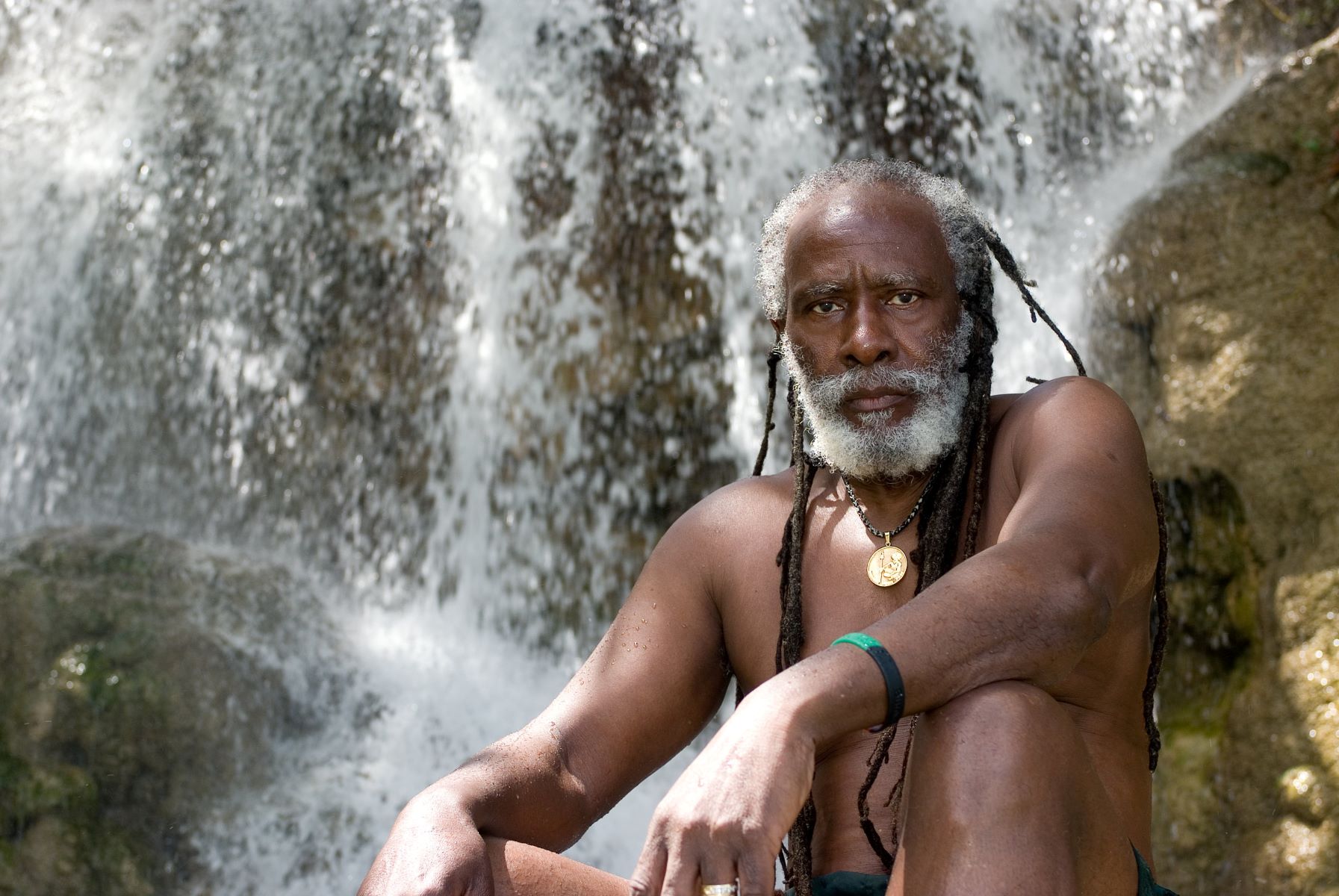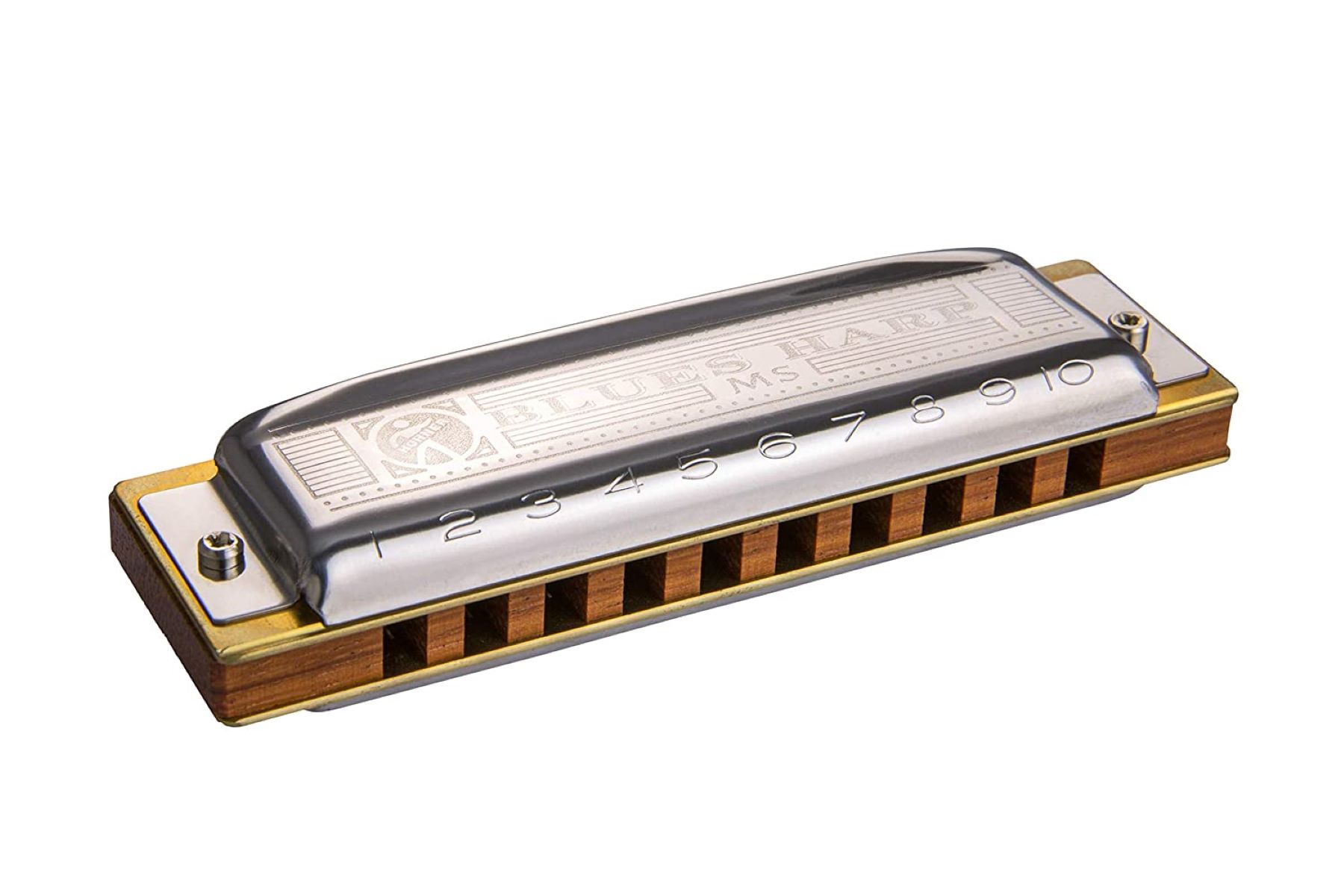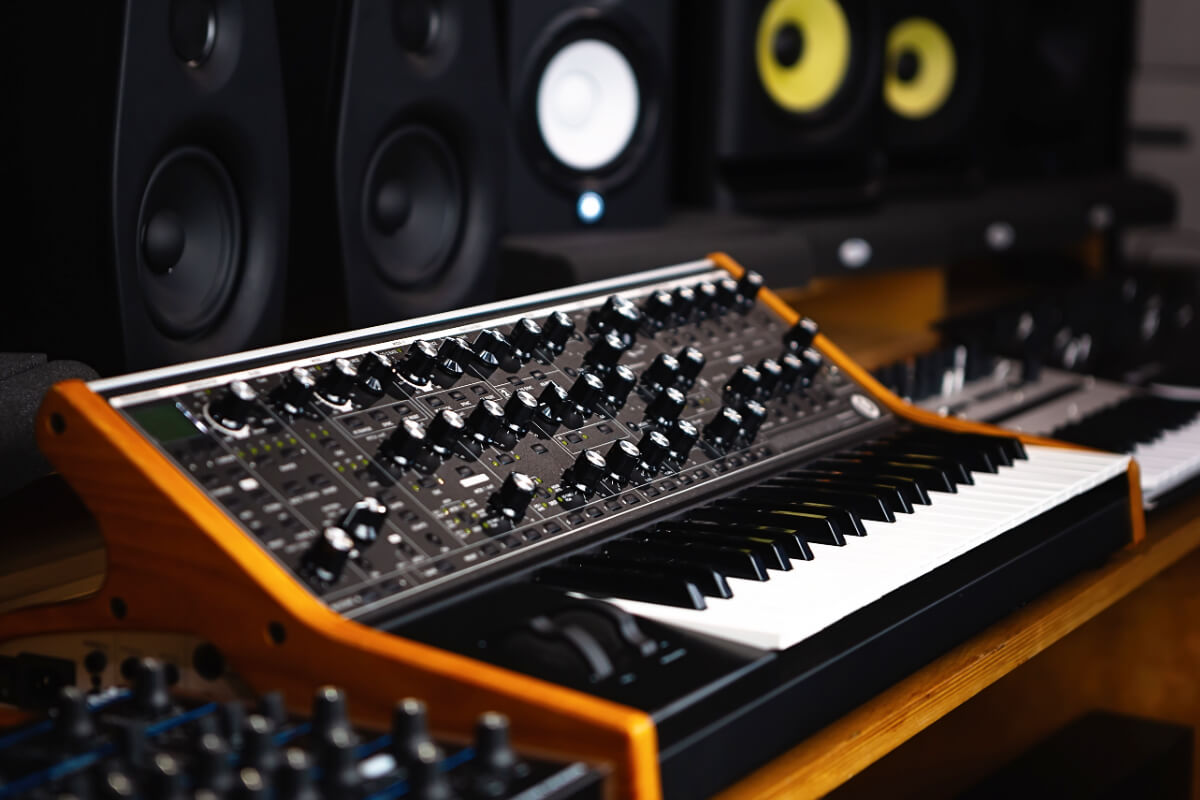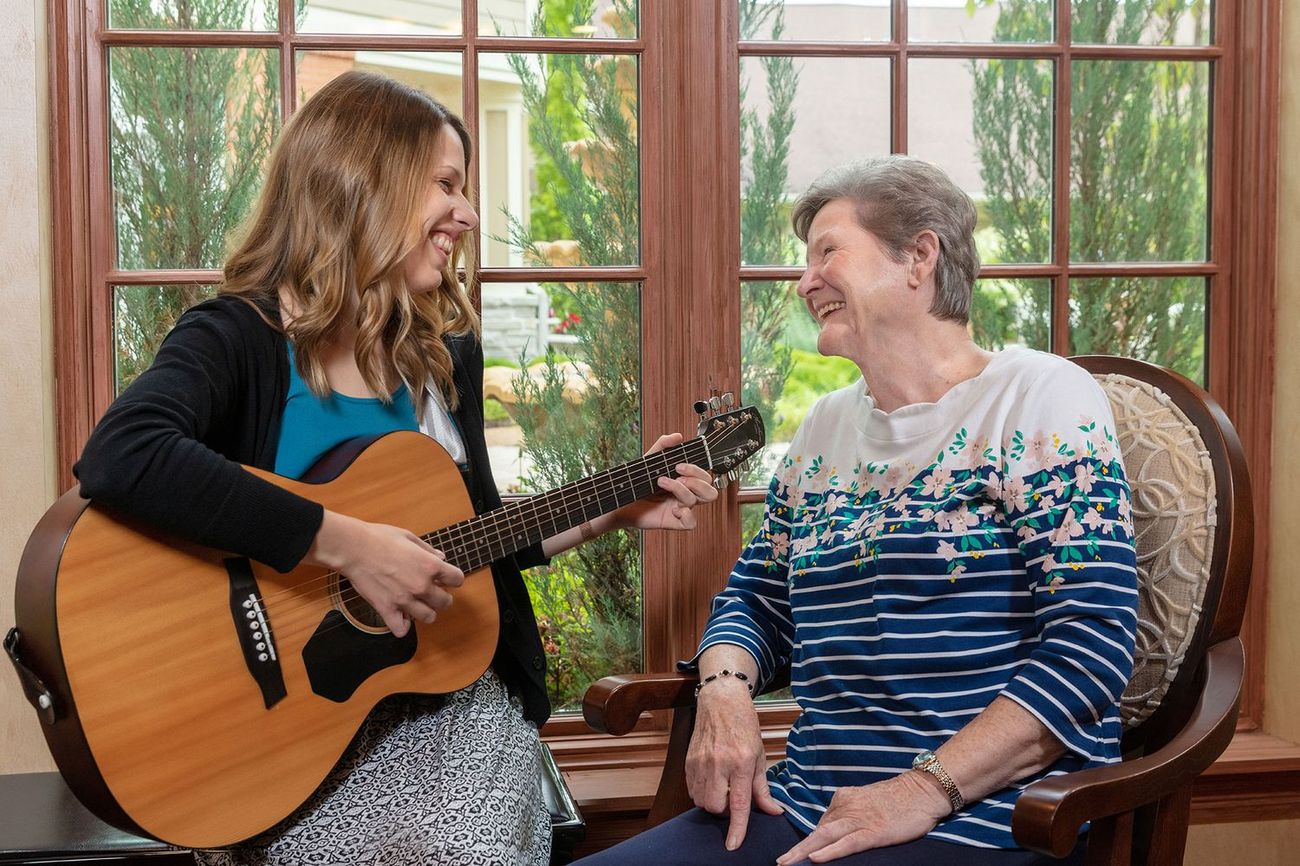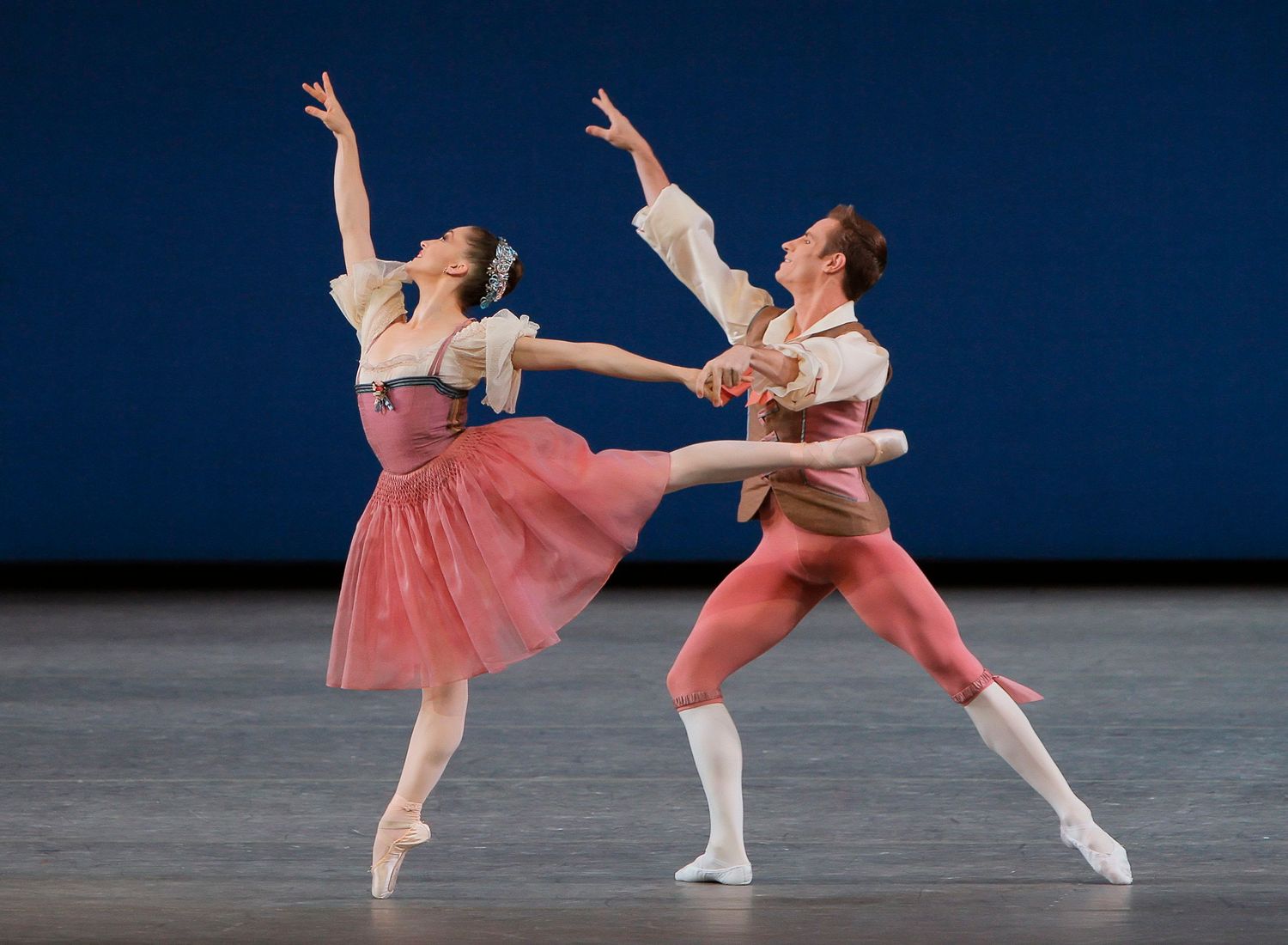Home>Events & Info>Ballet>What Are The Types Of Ballet


Ballet
What Are The Types Of Ballet
Published: January 9, 2024
Discover the various types of ballet, including classical ballet, neoclassical ballet, and contemporary ballet. Explore the world of Ballet and its captivating artistry.
(Many of the links in this article redirect to a specific reviewed product. Your purchase of these products through affiliate links helps to generate commission for AudioLover.com, at no extra cost. Learn more)
Table of Contents
Introduction
Ballet is a captivating art form that has been captivating audiences for centuries. The grace, strength, and precision required by ballet dancers make it a truly mesmerizing spectacle. But did you know that there are different types of ballet? Each type has its own unique characteristics and style. In this article, we will explore the various types of ballet and delve into what distinguishes them from one another.
Ballet originated in the Renaissance period in Italy and later gained popularity in France and Russia. Over time, it evolved into different styles and forms, each with its own set of techniques and movements. From the classical elegance of the traditional ballets to the contemporary and innovative creations of modern ballet, there is a wide range of styles to explore.
Whether you’re a ballet enthusiast or just curious about the art form, this article will provide you with a comprehensive overview of the different types of ballet. We will delve into the history, techniques, costumes, and characteristics of each type to give you a deeper understanding and appreciation of this beautiful art form.
So, let’s embark on this journey through the world of ballet and discover the captivating diversity that exists within this enchanting dance form.
Classical Ballet
Classical ballet is the foundation of all other ballet styles and is characterized by its precise and highly formalized technique. It emerged in the 17th century in France and was further developed in Russia during the 19th century. The key features of classical ballet include the use of turned-out legs, pointed feet, and fluid, graceful movements.
One of the most iconic aspects of classical ballet is the emphasis on the beauty of line and extension. Dancers strive for an elongated posture, with their bodies appearing as if they are in constant extension. This is achieved through meticulous training in various positions and exercises, such as the five basic positions of the feet and the use of turnout, where the legs rotate outward from the hips.
Classical ballet repertoire includes well-known ballets such as “Swan Lake,” “The Nutcracker,” and “Giselle.” These ballets often tell a story through a combination of music, dance, and elaborate costumes and sets. The choreography in classical ballet is highly structured and follows a strict set of movements, known as the ballet vocabulary.
Female dancers in classical ballet often wear pointe shoes, which allow them to dance on the tips of their toes, creating an ethereal and weightless appearance. Male dancers perform powerful jumps and turns, showcasing their strength and athleticism.
Classical ballet requires years of dedicated training to master the intricate technique and develop the strength and flexibility needed to execute the demanding movements. It is a disciplined and rigorous art form that demands precision, musicality, and artistry from its dancers.
While classical ballet may be steeped in tradition, it continues to evolve and adapt to the times. Contemporary choreographers often infuse classical ballet with elements of modern and neoclassical styles, pushing the boundaries and creating innovative and visually stunning performances.
Overall, classical ballet remains a cornerstone of the dance world, embodying elegance, grace, and the timeless beauty of the art form.
Neoclassical Ballet
Neoclassical ballet emerged as a response to the strict rules and traditions of classical ballet. Developed in the 20th century by choreographers such as George Balanchine, neoclassical ballet combines the classical technique with more experimental and contemporary movements.
Neoclassical ballet diverges from the traditional narrative-driven ballets and focuses on abstract and non-linear works. The choreography often emphasizes speed, musicality, and athleticism, featuring intricate footwork, quick changes of direction, and daring lifts. These ballets often have a more minimalist set design, allowing the movement to take center stage.
Neoclassical ballet also brings more freedom of expression, challenging dancers to explore new ways of moving and pushing the boundaries of classical technique. The style embraces a more contemporary and modern aesthetic, incorporating elements from other dance forms, such as jazz and modern dance, into the classical vocabulary.
Costuming in neoclassical ballet can vary, with dancers sometimes opting for simpler, more streamlined attire to match the minimalist approach. The focus is on the movement itself, rather than ornate costumes or elaborate storytelling.
Neoclassical ballet has had a significant impact on the world of dance, allowing for more experimentation and artistic expression within the strict framework of classical technique. It has inspired countless choreographers and pushed the boundaries of what ballet can be.
Some notable neoclassical ballets include Balanchine’s “Apollo,” “Serenade,” and “Agon,” as well as works by other influential choreographers like William Forsythe and Jiří Kylián.
Neoclassical ballet continues to evolve and evolve, with choreographers drawing on its principles while infusing it with fresh ideas and influences from contemporary dance. It remains a dynamic and influential style that showcases the versatility and adaptability of ballet as an art form.
Contemporary Ballet
Contemporary ballet is a vibrant and ever-evolving dance style that blends the techniques and aesthetics of classical ballet with modern and contemporary dance elements. It emerged in the mid-20th century as a response to the rigid structure of classical ballet and a desire to explore new forms of movement and expression.
Unlike classical ballet, contemporary ballet does not adhere to strict rules or traditional narratives. Instead, it encourages dancers to explore their personal artistry and creativity, often resulting in unique and experimental choreography.
Contemporary ballet embraces a wide range of movement possibilities, combining fluidity and athleticism with a sense of freedom and individual expression. Dancers may incorporate floor work, twisting and spiraling movements, and non-traditional partnering techniques. It often explores abstract themes or tackles social and political issues, offering a more thought-provoking and challenging experience for both the dancers and the audience.
The music used in contemporary ballet productions can be eclectic and varied, incorporating a mix of classical compositions, contemporary music, or even electronic soundscapes. This diversity in music further enhances the innovative and boundary-pushing nature of contemporary ballet.
Costuming in contemporary ballet can also deviate from the traditional tutus and pointe shoes of classical ballet. Dancers may wear more casual or unconventional attire, allowing for greater freedom of movement and self-expression.
Contemporary ballet has given rise to numerous renowned choreographers, such as Jiří Kylián, Crystal Pite, and Wayne McGregor, who have made significant contributions to the evolution of the art form. Their daring and innovative works continue to push the boundaries of what is possible in ballet and inspire the next generation of dancers and choreographers.
Overall, contemporary ballet offers a fresh and dynamic approach to the classical form, providing a platform for artistic exploration and creative expression. It celebrates individuality, diversity, and the ever-evolving nature of the dance world.
Romantic Ballet
Romantic ballet is a genre that emerged in the 19th century, characterized by its emphasis on storytelling, expression, and the exploration of human emotions. It was a direct response to the classical ballet of the time, introducing new movements and themes that resonated with the Romantic era.
In contrast to the formalism of classical ballet, romantic ballet emphasized the use of flowing movements, ethereal qualities, and a heightened sense of drama. It delved into themes of love, passion, and supernatural elements, often featuring mythical creatures, supernatural beings, and tragic love stories.
One of the most iconic ballets from this era is “Giselle,” which tells the story of a young peasant girl who dies of a broken heart and joins a group of vengeful spirits known as the Wilis. The ballet showcases delicate movements, beautifully crafted mime sequences, and an emotional depth that captivates audiences.
Romantic ballet also introduced technical innovations, such as the use of pointe work to convey lightness and ethereality. Dancers would float across the stage, appearing weightless and otherworldly. The role of women in romantic ballet became increasingly important, with female dancers taking on lead roles and showcasing their exquisite technique and emotive abilities.
Costumes in romantic ballet often featured long, flowing skirts and delicate details, adding to the ethereal and dreamlike ambiance of the performances. Intricate sets and lighting effects were also utilized to create a sense of mystery and enchantment.
Despite its historical origins, romantic ballet continues to hold a significant place in the present-day repertoire. The timeless themes and emotional depth explored in these ballets resonate with audiences and continue to be revisited and reimagined by contemporary choreographers.
Through its expressive movements, gripping narratives, and evocative music, romantic ballet taps into the human experience, evoking emotions and connecting with audiences on a deep level. It captures the essence of passion, love, and the longing for something beyond the realm of reality.
Romantic ballet is a testament to the enduring power of storytelling through dance, and its influence can be felt in the artistic exploration and emotional depth of ballet performances today.
Character Ballet
Character ballet is a unique style that incorporates elements of folk dances and traditional character types into the classical ballet vocabulary. It originated in Russia in the 19th century and was popularized by choreographers such as Marius Petipa.
In character ballet, dancers portray specific characters, often drawn from traditional folk tales, fairy tales, or national dances. These characters may include peasants, aristocrats, supernatural creatures, or even animals. Each character has distinct movements, gestures, and costumes that convey their personality and story.
Character ballet showcases the rich cultural heritage of different countries and regions, as the choreography draws inspiration from traditional folk dances. The movements and steps are often characterized by vibrant, dynamic footwork, expressive arm gestures, and playful interactions with other dancers.
Costumes in character ballet are elaborate and reflect the cultural attire of the character being portrayed. They may include traditional garments, such as peasant dresses, military uniforms, or ornate ball gowns, depending on the story and setting of the ballet.
One famous example of character ballet is “Don Quixote,” which features flamenco-inspired choreography and vibrant Spanish costumes. The ballet tells the story of the adventurous knight Don Quixote and his pursuit of love and chivalry.
Character ballet requires versatility from dancers as they need to embody the essence of a particular character, while still maintaining the technical precision and elegance of classical ballet. It calls for expressive acting, strong stage presence, and the ability to seamlessly transition between different movement styles.
Character ballet is a celebration of cultural diversity and a testament to the ability of dance to convey stories and evoke emotions. It adds a dynamic and colorful dimension to the world of ballet, captivating audiences with its vibrant characters, lively music, and infectious energy.
Today, character ballet continues to be an integral part of ballet repertoire, with classic productions like “Swan Lake,” “The Sleeping Beauty,” and “La Bayadère” incorporating character dances to enhance the storytelling and showcase the diverse range of ballet techniques and styles.
Folk/Traditional Ballet
Folk ballet, also known as traditional ballet or national dance, is a genre that celebrates the traditional dances and cultural heritage of different countries and regions. It incorporates elements of folk dances, music, and costumes into the classical ballet technique, creating a unique fusion of styles.
Folk ballet draws inspiration from the traditional dances and customs of a specific country or region. It aims to showcase the authenticity and beauty of these cultural traditions while incorporating the technical precision and artistry of classical ballet.
Each folk ballet is a reflection of the distinct cultural identity and storytelling traditions of its origin. Dancers wear costumes that are representative of the specific culture, adorned with vibrant colors, intricate designs, and traditional embellishments.
The choreography in folk ballet often incorporates characteristic movements and steps unique to the traditional dances it represents. These dances may include lively circle formations, rhythmic footwork, vibrant jumps, and joyful expressions.
Folk ballet serves as a bridge between the folklore and the ballet world, preserving and celebrating cultural traditions while adding a new artistic dimension. It allows audiences to experience the richness and diversity of different cultures through the universal language of dance.
One well-known example of a folk ballet is “Les Sylphides,” which features a romanticized portrayal of Scottish and Russian folk dances within the context of a classical ballet. The ballet showcases the beauty of nature and ethereal spirits, capturing the essence of these traditional dances and incorporating them into a larger narrative.
Through the vibrant movements, music, and costumes, folk ballet invites audiences to immerse themselves in the cultural traditions and stories of different regions. It creates a sense of connection and appreciation for the diversity and heritage of the world.
Folk ballet continues to evolve and adapt, with contemporary choreographers incorporating elements of traditional dances into innovative and modern productions. It serves as a reminder of the rich tapestry of human culture and the power of dance to transcend boundaries and bring people together.
Modern Ballet
Modern ballet, also known as contemporary ballet, is a genre that emerged in the early 20th century as a departure from the traditional constraints of classical ballet. It pushes the boundaries of movement, choreography, and artistic expression, incorporating elements from modern dance, improvisation, and other contemporary dance forms.
Modern ballet challenges the traditional notions of ballet technique, experimenting with different movement qualities, unconventional body lines, and a more relaxed approach to form. It combines the fluidity and expressiveness of contemporary dance with the technical foundation of classical ballet.
Choreographers in modern ballet often take a more abstract and conceptual approach, exploring themes and ideas beyond narrative storytelling. They use movement as a means of expressing emotions, ideas, and the complexities of the human experience.
The music used in modern ballet can vary widely, ranging from classical compositions to contemporary songs or even experimental soundscapes. The choreography is often characterized by dynamic and innovative movement vocabulary, incorporating floor work, lifts, and non-traditional partnering.
Costuming in modern ballet is often minimalist, focusing on the movement and the bodies of the dancers rather than elaborate costumes. This allows the choreography to take center stage and emphasizes the raw and authentic nature of the performance.
Modern ballet has been influenced by visionary choreographers such as Martha Graham, Merce Cunningham, and Pina Bausch, who have made significant contributions to the art form. Their unique approaches to movement and choreography have challenged traditional notions of ballet and expanded the possibilities of the dance form.
Today, modern ballet continues to evolve and adapt, with contemporary choreographers pushing the boundaries of the art form even further. They fuse various movement styles, experiment with different music genres, and explore new ways of storytelling through dance.
Modern ballet offers dancers the opportunity to explore their own creative voices, express their individuality, and challenge traditional notions of beauty and technique. It is a celebration of innovation, self-expression, and the limitless possibilities of dance.
By embracing a diverse range of influences and breaking free from conventions, modern ballet provides a platform for artistic exploration and a reflection of our ever-changing world.
Conclusion
Ballet is a captivating art form with a rich history and a diverse range of styles. From the classical elegance of classical ballet to the experimental and boundary-pushing nature of modern ballet, each style offers a unique experience and showcases the versatility of this magnificent art form.
Classical ballet serves as the foundation and epitome of ballet technique, with its precise movements, graceful lines, and intricate storytelling. It continues to enchant audiences with its timeless beauty and enduring repertoire.
Neoclassical ballet emerged as a response to the strict rules of classical ballet, introducing a more contemporary and experimental approach. It allows for greater freedom of expression and artistic exploration while still maintaining the technical precision of classical technique.
Contemporary ballet pushes the boundaries of ballet even further, blending classical technique with modern and innovative movements. It embraces a wider range of styles, themes, and music to create thought-provoking and emotionally charged performances.
Romantic ballet captures the essence of passion, love, and the supernatural realm through its storytelling and expressive movements. It transports audiences into a dreamlike world of emotion and enchantment.
Character ballet celebrates cultural heritage, incorporating folk dances and traditional characters into the classical ballet vocabulary. It showcases the diversity and richness of different cultures, adding another layer of storytelling to the world of ballet.
Folk ballet showcases the traditional dances and customs of specific regions, preserving cultural heritage and sharing the beauty of these traditions with audiences around the world. It serves as a connection to our roots and a celebration of human diversity.
Modern ballet breaks away from the traditional constraints of classical ballet and explores new movement possibilities, pushing the boundaries of artistic expression. It embodies innovation, self-expression, and the ever-evolving nature of dance.
In conclusion, the various types of ballet offer a spectrum of styles, techniques, and storytelling that make ballet an incredibly diverse and captivating art form. From the classical to the contemporary, ballet continues to evolve and adapt, inspiring and mesmerizing audiences with its beauty, emotion, and artistic depth.


